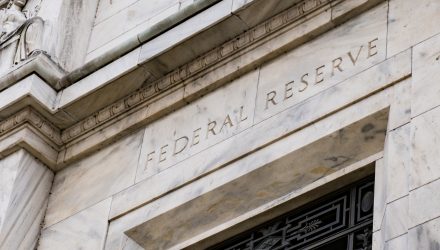U.S. markets and stock ETFs continued to strengthen Tuesday as investors remained hopeful that the Federal Reserve will maintain a more accommodative monetary policy in its upcoming meeting.
On Tuesday, the Invesco QQQ Trust (NASDAQ: QQQ) was up 0.6%, SPDR Dow Jones Industrial Average ETF (NYSEArca: DIA) rose 0.3% and SPDR S&P 500 ETF (NYSEArca: SPY) gained 0.4%.
Stock investors maintained their risk-on position on hopes that the Federal Reserve’s two-day meeting this week will yield a more accommodative result after a number of downbeat economic data this month supported expectations of a more dovish stance from the Fed, Reuters reports.
“We’re seeing stocks run up a little bit in anticipation of the Fed announcing no hike in 2019 and a curtailment of the balance sheet runoff,” Bryan Reilly, managing director at CIBC U.S. Private Wealth Management, told Reuters.
The Fed’s monetary-policy statement is expected Wednesday. Market participants grown more sensitive to Fed policy after the central bank took on a more aggressive stance toward the end of 2018. However, Fed Chairman Jerome Powell has tried to allay fears since by providing increasingly dovish briefings so far this year.
“There’s a lot priced into the Fed remaining dovish,” Shannon Saccocia, chief investment officer at wealth management company Boston Private, told the Wall Street Journal. “If they come out and say they expect one rate raise this year and that they remain data dependent, that would be a rangebound positive for markets.”
Related: Why NOBL ETF’s New Holdings Are Worthy
Furthermore, market participants were waiting on a trade deal as negotiations between the U.S. and China extends.
“Investors have had a lot of anxiety over the Fed’s policy path over the past year,” Ann Miletti, managing director and co-lead portfolio manager at Wells Fargo Asset Management, told the WSJ. “We don’t have certainty the trade deal with China or that domestic growth is OK yet. We think a lot of the weakness in U.S. data is due to seasonality, the partial government shutdown and tariffs that were put in place, but we need more proof of that with positive data in the second quarter.”
For more information on the markets, visit our current affairs category.

